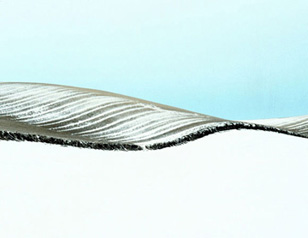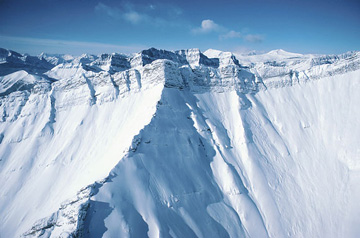The Causes of Mass Movement
There are many types of mass movement, but in all types, mass movement is characterized by the downslope movement of materials under the influence of gravity. A landslide, caused by gravity erosion, involves the movement of large quantities of material very quickly, and it can be deadly. But whether it happens quickly or slowly, mass movement happens on all slopes. The ultimate result is the movement of material from higher to lower elevation.
Imagine walking along in the snow as shown in the images. Which would be easier to climb?


If you started to climb a rolling hill it would not take as much effort as compared to climbing the mountain. Similarly, the slope of a surface determines the amount of stress on that surface. On a steep slope, there is a lot of shear stress and the soil on top is more likely to move. On a shallow slope, there is a lot of shear strength to resist that movement. There is a point, however, at which a balance occurs—the angle of repose is the maximum angle of a slope that the soil (or snow in this case) can withstand without movement. This angle changes depending on the soil type and how much water it contains.